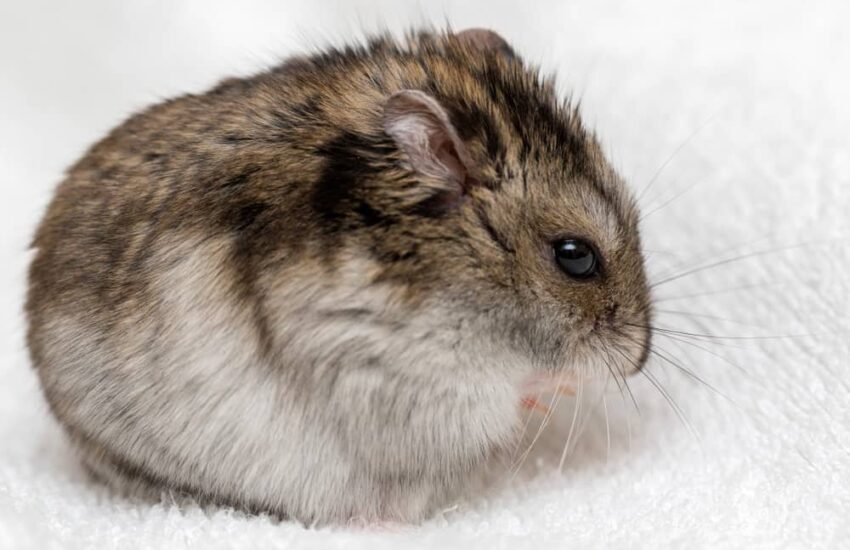How to Identify Hamster Types
Hamsters are adorable creatures that come in various breeds, each with its unique characteristics. Understanding how to identify these different hamster types can enhance your pet ownership experience, allowing you to select a breed that best fits your lifestyle and preferences. In this guide, we’ll explore several hamster breeds, their distinct features, and tips on how to determine which type of hamster you may have.
Key Characteristics of Hamster Breeds
When looking to identify hamster types, it’s essential to recognize the specific attributes that differentiate one breed from another. Hamsters can vary in size, fur type, coloration, and behavior. For instance, **Syrian hamsters** are known for their larger size and can have varied fur textures, while **Dwarf hamsters** like the Campbell’s Dwarf have a smaller stature and often show a more playful demeanor.
Physical Appearance
The most straightforward way to identify hamster types is by examining physical attributes. Syrian hamsters are typically larger, reaching lengths of 5 to 7 inches, distinguished by their robust body and short tails. In contrast, **Dwarf hamsters** measure around 3 to 4 inches. Certain breeds, such as the **Roborovski hamster**, are notably quick and small, which may confuse newcomers. Observing these physical traits can be a great starting point in identifying your pet’s breed.

Fur Color and Texture
Fur color and texture can also aid in distinguishing between hamster varieties. **Syrian hamsters** often come in various colors, including gold, black, and cream, and can also have long, luxurious fur. On the other hand, **Dwarf hamsters** may have patterns like banded or spotted designs with varying colors depending on the type, such as the **Winter White Dwarf hamster**, which has a unique seasonal coat change that can make identification interesting!
Behavioral Traits
Understanding a hamster’s behavior can help you identify its breed. **Syrian hamsters** tend to be solitary and may exhibit more territorial behaviors, preferring to be alone in their cage. **Dwarf hamsters**, conversely, often enjoy company and are more sociable, making them a fun choice for families. Observing how your hamster interacts with you and its environment can provide significant clues about its breed.
Popular Hamster Breeds to Identify
There are several popular hamster types, each with unique qualities. Familiarizing yourself with these breeds can enhance your hamster-keeping experience. Here, we’ll detail some common hamster types and their essential features.
Syrian Hamsters
Syrian hamsters are one of the most common types kept as pets. They are easily identified by their size and variety of colors. This breed tends to be larger than others, often reaching up to 7 inches long. Owners often appreciate their docile nature, making them great companions. They require ample space and enjoy having a comfortable habitat.

Campbell’s Dwarf Hamsters
This petite breed is a popular choice due to its playful personality. Campbell’s Dwarf hamsters typically measure only 3 to 4 inches in length. Their friendly disposition makes them excellent pets for families with children. The breed comes in several colors and can often be recognized by their small size and adorably round bodies.
Roborovski Hamsters
Roborovski hamsters are the smallest breed, reaching only about 2 inches. They are known for their agility and speed, often being more challenging to catch when they scurry around. Their lively nature makes them entertaining pets, though they generally prefer to keep to themselves and thrive better in pairs or small groups compared to Syrian hamsters.
Tips for Accurate Identification
Identifying the right hamster type will involve a combination of physical assessment, behavioral observation, and examining cage setup. Here are some practical tips to help ensure an accurate identification.
Use a Reference Guide
Having a reference guide or an online resource can be valuable when differentiating hamster types. Proper resources will usually provide images and detailed descriptions of various breeds. For instance, recognizing the differences between a **Chinese hamster** and a **Winter White Dwarf hamster** can be simplified with visual aids, which makes identification much more accessible.

Consult with a Veterinarian or Pet Store
If you’re still unsure after your observations, consider seeking professional advice. A veterinarian can identify hamster breeds with ease, providing insight into their care requirements and behavior. Local pet store employees often have extensive knowledge of various hamster types, helping further clarify any uncertainty.
Key Takeaways
- Hamsters can be identified by specific physical characteristics, sizes, and behaviors.
- Common breeds include **Syrian**, **Dwarf**, and **Roborovski hamsters**, each with unique traits.
- Using reference materials and consulting professionals can aid in the identification process.
FAQ
1. What are the main differences between Syrian and Dwarf hamsters?
Syrian hamsters are larger, usually between 5 to 7 inches, and prefer solitude, while Dwarf hamsters, around 3 to 4 inches, are social and enjoy companionship. Behavioral differences also impact their care requirements and suitable habitats.
2. Can hamsters live together?
While **Dwarf hamsters** can often live in pairs or small groups, Syrian hamsters generally should be kept alone to avoid territorial issues. Always monitor interactions to prevent aggression or stress.
3. How do I choose the right hamster breed for kids?
Consider choosing a breed like the **Campbell’s Dwarf hamster**, which tends to be more friendly and sociable. Ensure your children understand gentle handling and proper care to enhance the hamster’s well-being.
4. Are there specific care requirements for different hamster types?
Yes, different breeds have varying space and social needs. Syrian hamsters require larger cages with solid surfaces, whereas Dwarf hamsters can thrive in smaller, more sociable settings. Always research the specific needs of your chosen breed.
5. How can I ensure my hamster is healthy?
Regularly check your hamster’s weight and behavior, providing a balanced diet, clean habitat, and proper exercise opportunities. Veterinary check-ups are also important for overall health assessments.
